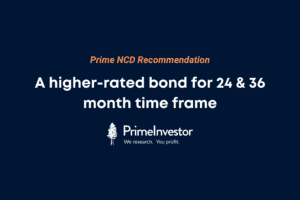It appears to be ETF season now with many AMCs lining up or launching ETFs. ICICI Pru AMC’s new ETF launch aims to mirror the Nifty Alpha Low Vol 30 index.
This multi-factor index combines the long-term benefits of containing downsides (through low volatility factor) along with higher returns (through high-alpha stocks). The index beats the key Nifty 100 index with high consistency, as well as other factor indices. While it is possible that some active funds may follow such a strategy in their internal process, this index is unique for being passive and seeking to deliver superior risk-adjusted returns.
Here’s more on the index and how its returns compare with other investment options. Please note that wherever we have talked about index returns, it is the TRI index.
What the Nifty Alpha Low Vol 30 index is about

The Nifty Alpha Low Vol 30 index is a multi-factor index. That means instead of being market cap driven, it sets factors (call them rules) to pick stocks. Among the various Nifty strategy indices are the single-factor indices – quality, value, low volatility, alpha, and beta. Then there are the multi-factor indices which combine two or more of these single-factor models (excluding beta).
These factors are applied on a parent index (like the Nifty 100, the Nifty 200, the Nifty Midcap 150 etc) and the stocks that score on the factor form the index. Stock weights are decided by the factor, and not the market capitalisation.
The Nifty Alpha Low Vol 30 (Nifty Alpha Low Vol) combines alpha and low volatility. The index methodology is as follows:
- Stocks from the Nifty 100 and the Nifty Midcap 50 form the eligible universe to calculate the index. The index is made up of 30 stocks.
- Alpha is measured using by the Jensen’s alpha formula, using the Nifty 50 as the market return. Low volatility looks at the deviation in stock price returns. Both factors consider a 1-year period to calculate scores.
- There is equal weight to alpha and low volatility factors. The top 30 stocks on the combined score form part of the index. The stock’s weight is decided by its score, with individual weights capped at 5%.
- Rebalancing the index is done in June and December.
Though it picks from both the large-cap and mid-cap indices, the Nifty Alpha Low Vol 30 is primarily large-cap based. Of the 30 stocks currently in the index, 26 are from the Nifty 100. Going by the latest available factsheet, the top 10 stocks and the sectors in the Nifty Alpha Low Vol are as below.
Where the returns come from
The Nifty Alpha Low Vol 30 blends the benefits of low volatility while still going after higher returning stocks. Over the longer term, low volatility as a strategy works very well as the better downside containment pushes up returns. Read more about low volatility index in our coverage on it here. Consider the single-factor indices, and the range of their return below:
As you can see, the Low Vol manages well on downsides, while the High Beta and the Alpha do well on gains. The movement of these indices over the years also point to the Low Vol index pushing ahead of the other single-factor indices. Therefore, putting the Low Vol and Alpha appears to work well.
The combination works as follows:
- One, the index scores very well on containing downsides thanks to low volatility. Based on 1-month rolling returns over the past decade, the Nifty Alpha Low Vol 30 captures just 56% of the Nifty 100’s downside on an average. The bulk of the index comes from the Nifty 100. The Nifty Low Vol’s capture ratio comes in at 69%. Extending this period out to 6 months and 1 year also shows similar trends.
- Two, the alpha factor helps push returns during market upswings as it latches on to momentum. The pure Low Vol index does not have this in its favour, as can be seen from the table above. The Nifty Alpha Low Vol 30, therefore, beats the Low Vol by a slim margin. On upside capture, over 1-year periods, the Alpha Low Vol captures 138% of the Nifty 100’s 1-year gains on an average against the 110% of the Low Vol.
- Three, the index is less volatile. Deviation in returns in different periods is on par with the Low Vol index itself and much lower than the broader, market-cap based indices.
How do returns compare
So if the Nifty Alpha Low Vol 30 is now an investment option, what can it be compared to? One, the single-factor indices available in the form of ETFs – low volatility, quality, and value. Then there are the broader market indices – the Nifty 100 and the Nifty LargeMid 250, since the index combines large-caps and mid-caps.
Against all these, the Nifty Alpha Low Vol 30 comes out on top. The index is able to beat the comparable indices with a high degree of consistency in the 1-year and 3-year periods. Based on the 3-year rolling returns since 2014 – we chose this because it covers a variety of market cycles – the Alpha Low Vol index:
- Beats the Nifty LargeMid 250 and the Nifty 100 all the time.
- Its average returns are ahead of even the top-notch Nifty Next 50. In shorter timeframes of 1-year, however, the Alpha Low Vol is less consistent.
- Beats the Nifty 100 Quality 30 all the time.
- It’s slightly less consistent against the Nifty 50 Value 20. But the Value 20 index picks only from the Nifty 50, making it a far narrower and therefore less comparable an index.
- On a 1-year basis, the Alpha Low Vol and Low Vol are almost equally matched in this timeframe. But over 3 year periods, and stretching the timeframe further back to cover more market cycles, the Alpha Low Vol index comes out ahead about 78% of the time.
Now, consider equity funds. Comparable categories include both the multi-cap funds and the large-and-midcap funds. These categories have a mix of strategies, from growth, to value, to blended, to focused.
On this count, the index is able to beat a majority of the funds in both categories across timeframes. In the large-and-midcap category, for example, just about 1 in 5 funds delivers returns better than the Alpha Low Vol with any degree of consistency in the 1-year period. Even fewer manage it on a longer 3-year basis. The same trend holds with multi-cap funds as well.
Do note that the index has been run real-time only from 2017 onwards, though the index levels have been calculated and provided from 2005. Further, the index uses only the 1-year history to run the scores. To this extent, it does lean into short-term market mood.
ETF factors
The Nifty Alpha Low Vol 30 appears to hold potential to boost a portfolio’s return. However, we need to watch ICICI Pru ETF on this index to see how it scores well on average turnover and tracking error. These factors will determine whether you can invest in the ETF.
Per its documentation, the ETF will aim to cap annual deviation at 2%, but this in the higher end and is not guaranteed.
Using volumes of other ETFs as an indicator is inconclusive as there’s a wide differential both between AMCs and within an AMC. For instance, ICICI Pru’s Low Vol ETF has clocked average daily traded value of Rs 67.65 lakh since January this year while its NV20 ETF averaged about a tenth of that. SBI’s Nifty 100 Quality 30 ETF averaged Rs 4.4 lakh.
Given the Nifty Alpha Low Vol’s promise, we will be watching volumes and returns to see how they play out, besides how to use it in a long-term portfolio. For this reason we do not have an opinion on the ETF at this juncture (so please don’t write to us to double-check😊). For ETFs that pass our volume and return filters, refer to Prime ETF.
The NFO of ICICI Pru Nifty Alpha Low Vol 30 is open until August 10th. You will need a demat account if you wish to invest in it.







31 thoughts on “Prime Reviews: ICICI Pru Alpha Low Vol 30 ETF NFO – a winning multi-factor combo?”
I assume this ETF is equivalent to ‘growth’ option of mutual fund wherein devidens, etc get automatically added to the fund?
Also i can’t find any info about FoF being launched for this ETF as mentioned in earlier comments. May i know if you have any info on that?
There is no dividend..it is only growth. There is no FoF for this. Vidya
Any update on this ETF? Is investing recommended?
No, we have not issued a recommendation call on this yet. – thanks, Bhavana
As per SEBI website, there is an FoF being launched for this ETF as well. But if I understand it correctly, even if FoF is launched, liquidity may not be a problem for buying/selling but tracking error may still be a problem as the underlying ETF does not have enough volume. So FoF is also not an optimal solution. Is it correct understanding or there is more to it?
If tracking error is low, then volumes are a smaller problem. While lack of liquidity leads to tracking error, it’s possible to keep error low even if volumes are not very high. ICICI Pru Low Vol ETF is an example. With this Alpha Low VOl ETF, we don’t have enough history to judge tracking error, even if an FOF comes up now. – thanks, Bhavana
https://freefincal.com/icici-prudential-alpha-low-vol-30-etf-review-what-you-need-to-know/amp/
Read this article and compare the data with yours. And think, is it really good to pay your company for such analysis when we have free data available like above
It’s your call to take, depending on what you’re looking for. We are not data providers, and there’s a difference between giving data and interpreting it usefully. Our service is articles/research on investing, plus recommendations and tools…and we always work on enhancing these features. So yes, we believe our service is worth paying for. – thanks, Bhavana
Hi, is it time to look at this ETF now? If this fund is available offline like any other MF, wouldn’t be a good choice to buy it?
This is currently available as an ETF only. While there’s been a good space of time since launch, the volumes in this ETF are not too healthy and can sometimes be very erratic. – thanks, Bhavana
Hi
How is the trading volume data and actual performance of this ETF now that it has been live for over 4 months?
Thanks
Hello sir,
4 months is not enough time for volume trends to be established, and this is not a well-known ETF either. It can take a lot longer to find its feet. Please check this link if you wish to see volumes (available under historical data): https://www.nseindia.com/get-quotes/equity?symbol=ICICIALPLV
Thanks,
Bhavana
What’s the ticker for this etf
Hello sir,
You can check the following NSE link: https://www.nseindia.com/get-quotes/equity?symbol=ICICIALPLV. You can also check details for any ETFs either on the NSE or BSE websites, or with your broker.
Thanks,
Bhavana
What about dividend payed on above scripts ,nestle pharma even oil sectors give handsome dividend? There isn’t option of growth in etf..will they pay to us or they will keep it?
Hello sir,
Stock dividends are usually reinvested back into the ETF.
Thanks,
Bhavana
The scheme doc mention Expense ratio as upto 1%. For an etf, isnt this too high?
You didnt discuss in the article.
That is the standard mentioned in any SID, based on SEBI limit for each category. You will not know the expense ratio until the scheme is live after NFO. Vidya
Interesting analysis.
However the most import fact comes in the very last paragraph (and I fully agree to it)- trading volumes. Unless those are exceptionally good, everything else is just data. As far as the past track record goes, this ETF is not going to pick up any decent volume. In fact, a majority of investors will struggle to even understand the concept. Besides entry will be difficult (post listing), and if someone invests a meaningful amount, trying to exit will be a nightmare.
If the AMC has the courage to come out with an index fund based on this, I’ll surely consider investing. Till then, it’s just an interesting.
Thanks for the article
Hello sir,
Thanks….yes, at this point it is just an interesting index to keep an eye on. This is the reason we looked at it, since it can be a good option to invest in and worth tracking. Not all the Nifty factor indices are good investments 🙂 Unfortunately, I don’t think there will be an index fund for this. The AMC has other factor index ETFs that aren’t yet index funds. But volumes are sort of improving in some, so let’s see…
Thanks,
Bhavana
Comments are closed.